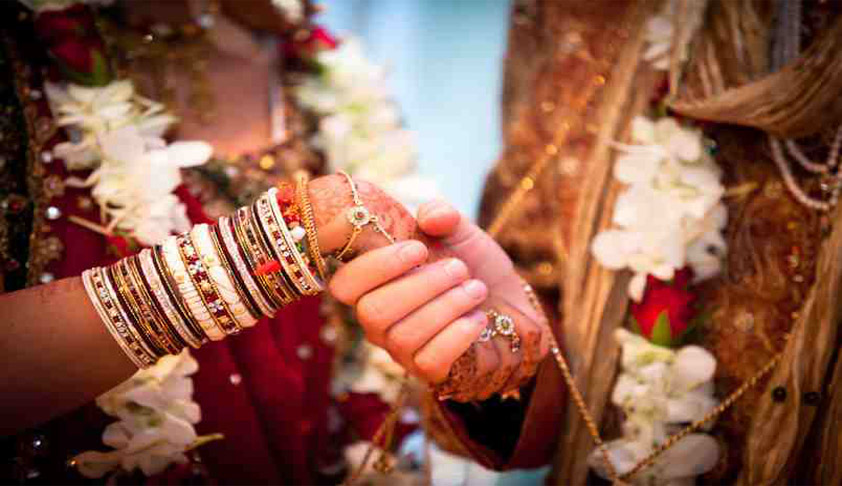How Embedded Patriarchy Has Historically Denied Justice to Women
Saumya Saxena
16 Oct 2016 1:42 PM GMT
In a Judgment [Narendra vs. K.Meena] by Justice Anil Dave and Justice Nageshwar Rao, the Supreme Court has stated that separating a Hindu husband from his parents amounts to ‘cruelty’.The Judgment suggested that “a son, brought up and given education by his parents, has a moral and legal obligation to take care and maintain the parents, when they become old and when they have either...
In a Judgment [Narendra vs. K.Meena] by Justice Anil Dave and Justice Nageshwar Rao, the Supreme Court has stated that separating a Hindu husband from his parents amounts to ‘cruelty’.
The Judgment suggested that “a son, brought up and given education by his parents, has a moral and legal obligation to take care and maintain the parents, when they become old and when they have either no income or have a meager income”. The bench not even once mentioned the wife’s parents, let alone ponder over her ‘moral and legal obligation’ to maintain aging parents or acknowledge their expenditure of her education.
Also Read: Forcing Husband To Get Separated From His Parents, Amounts To ’Cruelty’: SC
In 2012, the Bombay High Court had decreed that ‘women must be like Goddess Sita’, implying that women must accompany their husbands wherever they go. In this case, the wife’s vanvaas(exile) entailed that she give up her job and move to a different city. A woman’s income is often treated as disposable income within a family unit and her job is often a ‘supplementary’ source or ‘lipstick money’, not the income of a bread-winner. Significantly, cohabitation can also be forced in more perilous ways by invoking ‘restitution of conjugal rights’, the denial of which is also a ground for divorce. Thus, the absolute protection of ‘conjugal rights’ or the right to demand sex from one’s partner in the absence of any protection against marital rape puts women in an exceptionally vulnerable position. In another judgment,(S. Hanumantha Rao v S. Ramani) the wife’s unwillingness to wear a mangalsutra was treated as an evidence of ‘mental cruelty’ .
The judicial commitment to women’s rights is suspect in the light of the history of orthodox rulings and biased court judgments, which often reproduce cultural stereotypes of women’s role within the family.This has not been exclusive to any one religious personal law regime. For instance, in the case of Dawn Henderson v D. Henderson, in 1970, where a husband forced his wife into prostitution, the court admitted the evidence of ‘cruelty’ as a ground for divorce but rejected the divorce petition on the basis of insufficient evidence of adultery by the husband. The only way of getting justice in such cases appears to be by proving that the woman in question had been a ‘good wife’, and rights within family laws remain accessible primarily to whom the courts recognise as ‘honourable’ women subjects.
Also Read: Strange Ideas Of Justice Dave By Justice Markandey Katju
In an event hosted by women activists for reform of Muslim personal law, 350 women narrated their experiences of being denied jobs because of their divorce, and divorces due to infidelities of their husbands. A professor from Bombay University,Kulsum Parikh had narrated a story of 60-year-old man who divorced his wife on grounds that he had a fancy for ‘sari-wearing women’, and not ‘salwar-wearing women’. He divorced the first wife using triple-talaq and then married a 16-year-old.
The idea of cruelty towards women is misunderstood to a point that often we find people offering a defence of polygamy as means of ‘protection’ of women- the first wife. There is often tremendous emphasis laid on the need to preserve a marriage ostensibly for “the sake of the women”.
In a similar vein, the right to ‘divorce’ is then treated as a step towards potential ‘destitution’ of women. This was the Hindu Mahasabha’s standpoint during debates on the Hindu Marriage and Divorce Act, and we now find such arguments defended by the All-India Muslim Personal Law Board.
This is based on an extremely skewed logic that since the conditions of patriarchy already prevail, we can at best try to accommodate women within that system rather than allowing them to challenge it- benevolent paternalism. The enactment of new laws in India has historically taken a similar route and focused on addressing symptoms of the disease rather than the disease itself. For instance, the Muslim Women’s Protection of Rights on Divorce Act of 1986, focused exclusively on the question of maintenance upon divorce rather than attacking the route of the problem- arbitrary divorce, and unequal rights of inheritance between men and women. Similarly, in 2001, when the Christian divorce laws were amended, Parliament fiddled with technicalities such as two-year period for finalising a divorce or less, rather than debating the necessity of ‘irretrievable breakdown of marriage’ as a ground for divorce, which remains pending till date.
In the light of the recent demands for a uniform civil code, it is worth noting that ‘religion in question’ hardly has a bearing on the prejudicial reading of the law. It is patriarchy rather than plurality that hinders women’s access to justice. While all religions may show a uniform condemnation for bigamy, courts continue to demonise the second wife as a "concubine", "keep" or a "mistress" (D.Velusamy v. D Patchaiammal), with only sympathy for the adulterous husband as though he were somehow ‘led astray’ by the ‘other woman’. These instances highlight deeply embedded assumptions about women’s roles and identities in the family and in the reading of the law, including those laws that had been ostensibly designed for women’s well-being and protection. Judgments in family law cases, repeatedly and uniformly, reiterate the significance of ‘chastity’ and show indifference or even sympathy towards adulterous or violent husbands, indicating that women are often treated as not only secondary citizens in family law suits, but also treated as an inferior partner within marriage whose education, parents, and income are somehow less important than her husband.One can only hope that such judgments serve as unfortunate exceptions rather than precedents for future.
(Saumya Saxena is a PhD holder from the University of Cambridge, MSc. from University of Oxford specializing on Family Law in India. She is a Consultant for the Law Commission of India, but the views expressed in this article are her own and do not represent the views of the Commission. She worked with the Justice Verma Committee in 2012-13.)
 [The opinions expressed in this article are the personal opinions of the authors. The facts and opinions appearing in the article do not reflect the views of LiveLaw and LiveLaw does not assume any responsibility or liability for the same]
[The opinions expressed in this article are the personal opinions of the authors. The facts and opinions appearing in the article do not reflect the views of LiveLaw and LiveLaw does not assume any responsibility or liability for the same]
This article has been made possible because of financial support from Independent and Public-Spirited Media Foundation.


